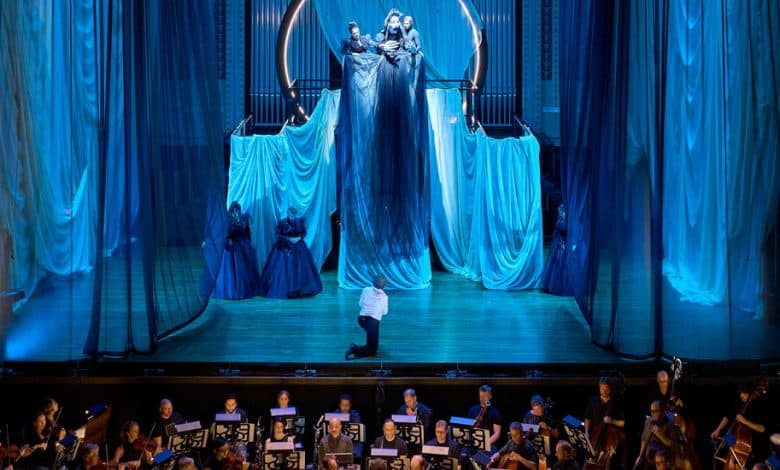Memo to Orchestras: Do More Opera

It was that rarest of sights when I walked into the Cleveland Orchestra’s hall on Sunday afternoon: a dark curtain drawn across the stage.
Rare, that is, in a concert hall. Orchestras don’t tend to have dramatic unveilings before they start to play. And while Cleveland has done near-annual opera presentations over the past two decades, the ensemble has almost always been onstage alongside the singers, as the stagings have worked around (and sometimes incorporated) the presence of dozens of players.
But for Mozart’s “The Magic Flute,” which ended a sold-out four-performance run at Severance Music Center on Sunday, the orchestra was lowered into an honest-to-goodness pit, and the curtain was closed at the start, just as it would have been in an opera house.
It was a reminder that opera — expensive to put on and not to everyone’s taste, though with a passionate fan base — has been ever harder to find in American cities. And a reminder that orchestras can — and should! — summon the resources to fill even a bit of that gap.
As the Cleveland Orchestra’s president and chief executive, André Gremillet, said in an interview, “This city doesn’t otherwise have world-class opera.” Cleveland Opera, a company that did present world-class offerings for several decades, faded away about 15 years ago, and a couple of companies left in its wake offer just a smattering of smaller-scale performances.
And yet there is a hunger for the art form, and an opportunity for orchestras around the country to expand their audiences. “There are people who are not here every week,” Gremillet said, “who will come to the opera — and more than once.”
